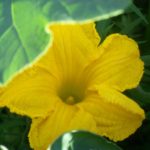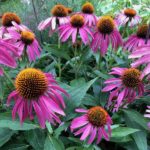
Whimsy is this week’s mindfulness focus, inspired by Beebalm (Monarda didyma), now flowering in my garden. Whimsy includes playfulness and amusement. And Beebalm certainly has those characteristics. The flower tops “… resemble unkempt mopheads,” according to the Missouri Plant Finder website. I have always thought they looked like Dr. Seuss characters, little creatures with tufts on their heads. And sometimes there are tufts (flowers) on top of tufts (flowers) on top of tufts (flowers), which seems very Dr. Seuss-like. The whimsical and seeming playful nature of bee balm is the first thing I think of when I see the plant. It makes me laugh.
But Beebalm has lots of other wonderful attributes as well. With colors ranging from pink to purple, the tufted flowers are a beautiful addition to the garden. Leaves and flowers make a tangy citrusy tea and can be added to salads and drinks. The plant is native to North America where it was used by the Otsego (correct spelling) Indians. It was also used by the colonists as a black tea substitute during the Revolutionary War. (1)
You might guess from the name that Beebalm can be used to soothe bee stings. The Wilderness Awareness School confirms this use of the plant. Simply crush enough leaves and flowers to obtain liquid, and apply that to the bee sting.
But the attribute I love most about Beebalm is whimsy. And if you are like me you don’t have enough whimsy or playfulness in your life. The serious parts of life (and there are many) can sometimes distract us from noticing the silly and playful things that exist all around us. The focus this week is noticing whimsy and playfulness, or maybe conjuring up some of our own, and taking the time to appreciate them.

For more information on mindfulness focus words click here.
Footnotes and other information on Beebalm
(1) Rodale’s Illustrated Encyclopedia of Herbs

